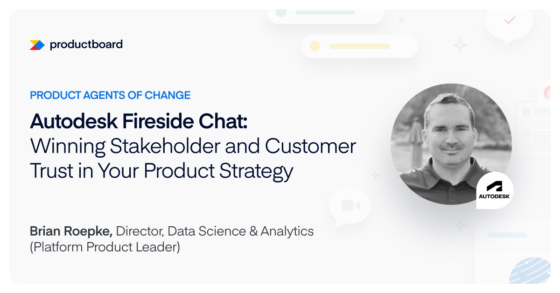Can product leaders manage their CEO?

Some of the greatest icons and most successful CEOs such as Mary Barra (GM), Indra Nooyi (PepsiCo), and Lisa Su (AMD) are product leaders at heart, and had careers in product management and product development before taking the top job. You would assume that if there are some remarkable leaders that know the product, then they should lead the product organization. But often this is not the case.
What if your CEO is suffering from delusions of product greatness? Unfortunately, they’re not all like those leaders with deep experience in product. As a leader in the product organization, what do you do to manage a CEO run amok?
The Challenge
- CEOs often think that they understand product better than anyone else. But maybe they don’t.
- CEOs often think that they can get the development team to solve a “little” customer problem without impacting priorities. But often such requests meddle with team priorities.
- CEOs often think they know customer requirements better than anyone else. They may know certain things about certain customers. But they don’t know everything about all of the customers.
And their misapprehension of their own skills and role in this domain can have serious consequences and amplify these challenges. For example, CEOs are well-placed to meddle in matters that are two-levels below the C-Suite, changing priorities with a few words to folks at a lower level on the org chart. These shifting priorities can muddy the waters significantly by losing focus on what customer-facing marketing and product management folks know is the right approach.
Why Is There A Conflict?
One of the problems is background and typical skill sets. In a small company, the CEO is often the founder, and founders are such because they have a deep insight into a solution that customers require. Often CEOs come from a customer background rather than a product marketing background. They understand customers intuitively but product management requires a laser-beam focus on discovery, and many CEOs don’t have that background.
Let’s outline the difference between the CEO’s perspective and a product leader’s in terms of perspective and time.
The CEO’s perspective is broad, and they need to balance these stakeholders’ requirements even when they are conflicting. Their world involves:
- Shareholders
- Customers
- Employees
The Chief Product Officer’s perspective is also broad, but it is focused on products and customers. Their world involves:
- Product Strategy
- Product Management
- Product Development
However, when it comes to timeframes, product leaders might have a longer perspective than the CEO who is worried about next quarter and the next big customer deal. A good product leader follows product roadmaps with a multiyear horizon. These roadmaps often capture the whole product development life cycle from innovation, growth, maturity and decline, with an eye towards the next product cycle.
This is not to say that a CEO doesn’t have a long term view. But a product leader’s view is almost always the long view. The CEO often has many short-term priorities mixed in, too.
Although the CEO’s remit is different from the head of product’s, they are aligned in several ways but misaligned in others. The secret to success is understanding how both roles contribute to higher level outcomes: revenues, profits, stakeholder success, and building a brand. Where they are aligned is around new product innovation and resulting growth in profit and revenue; but where they may not be aligned is around product strategy and the long term drivers of customer success.
Symptoms of CEO Meddling
Since the CEO’s range is so broad, and since they are the most accountable person in the organization, difficulties appear when they stray outside of their leadership lane. This often appears as meddling with what the product team has already decided. In most cases, that means that CEOs are interfering in what leadership has already approved.
When the CEO starts rearranging Engineering’s priorities, certain predictable symptoms appear. For instance, it might appear as too many initiatives launched that are off-strategy or only tangentially related to it. Or the dates of the next release slips to the next quarter.
It sometimes appears as product initiatives that get re-defined by the CEO internally. These redefinitions (related to the phenomenon of scope creep) don’t necessarily come from the areas of the company with the most robust customer knowledge. They come from the biggest business card. Or from whomever plays the best politics. And sometimes these decisions impact the other products on the roadmap, where they become less differentiated.
Meddling and political maneuvering is the antithesis of strategy. You set your product strategy based on the evidence. As a product leader, you are the owner and representative of that strategy. At base, the meddling behavior, the desire to change priorities suddenly, is an anti-strategic approach and that’s why it is often wasteful and counterproductive. Yet, it ultimately is the CEO’s prerogative although they don’t see the collateral damage.
What Should Product Leaders Do About it?
There are several ways that product leaders can head off these challenges and better manage their CEO. Having a voice with product management and marketing skill sets in the C-Suite (a CMO or CPO) is a good start, although it’s not sufficient.
It comes down to having clearly defined roles and responsibilities for senior executives that they abide by. Especially in smaller companies, CEOs can think that they personify the company and can simply do what they want. This is dangerous thinking. Product leaders should call their CEOs out when this happens, and remind them of specific situations in the past where a similar decision resulted in a bad outcome such as losing a major customer, or taking a big hit in revenues.
CEOs, like every other job in the company, have a defined role, which is largely facing outward toward investors and auditors, while creating a longer-term vision for the company. CMOs/CPOs are, presumably, senior product management experts whose role is to represent all stakeholders when it comes to the business of creating and marketing new products. Remember, that only the head of product can call out these bad behaviors – and it is their responsibility to do so.
Not only should each of these C-Suite roles have a clear definition, but those who report to them need to have a clear “chain of command.” And individual managers and contributors need to be taught to stick to the script and not shift when the CEO comes nosing around the office. At a minimum, managers that are asked to shift priorities should immediately let the product leadership know about it.
Above all, organizations need to clarify who owns product definition and how the CEO’s voice gets incorporated into the roadmap. Product leaders must be clear that their role is to map competition, technology, and the market to create a product roadmap that reconciles all three of these axes. Define a process whereby CEO’s and other senior leaders review, build, pressure test, and approve the roadmap. And when that process breaks down, don’t be afraid to call out the CEO.
After product leaders have defined and reached agreement on the CEO’s role in product definition, the product roadmap, and engineering priorities, they have a basis to resist having these priorities changed by mandate.
Here are a few other tips for managing the CEO:
- When your CEO puts in a request for the development team to make a “quick, small” change by asking an engineer to stop what they are doing, and shift priorities, make sure you are notified.
- When you are notified, bring it to the attention of the head of development and the CEO and deftly bring up the consequences of this change (remember to cite specific concrete actions and outcomes).
- Ask for forced ranking of priorities and then agree to support the change (and put it in the roadmap) or prevail on the CEO to delay their request to a better time, or reassign it to a less critical development team.
- Be preemptive and when there is a program initiated by the CEO or other product outsider that failed, memorialize that case, and keep it in a list of tangible, concrete examples of the consequences of meddling.
Leaders Enable the Success of Others
Finally, first-class organizations frame the CEO – and all senior leaders – as people whose job is to enable the success of the other folks in the company. Leadership is not about imposing one’s will on others. It’s about enabling them to be successful.
One of the CEO’s first and most important roles is to assemble a team of experts with a stake in the company’s success. The aim is to hire the right people and then enable them to be successful at what they do.
And, of course, this goes for your product people, from the CMO/CPO, down to the individual product manager and salesperson. The CEO is doing their job correctly when they enable the success of product marketing, which in turn enables customer success and brand success.
Final thoughts
Product managers can manage CEOs by influencing them to understand that product management is a skill as exacting as coding or materials engineering. By the time the company grew out of its start-up phase, the CEO probably brought in senior product people to run the product development and product management organizations.
CEOs need to let these folks do their jobs. That’s what they are there for. As product leader it is your job to uphold the value of your discipline, and the integrity of the product strategy, even in the face of meddling.
As a product leader, your role is also to understand the differences in perspective. It is also up to you to set the direction and then defend your strategy. To prevail, you need a clear-eyed understanding of your responsibilities, the related processes, and you have to have a firm grasp of the product and customer details. And you need to be willing to take a stand when the CEO inadvertently sabotages your roadmap.
John Carter is a widely respected expert on product development. He is an inventor of Bose’s Noise Cancelling Headphones and designer of Apple’s New Product Process. As Founder of TCGen Inc., he has consulted for Abbott, Amazon, Apple, Cisco, HP, IBM, Mozilla, Roche, 3M and many other organizations. He is the author of “Innovate Products Faster,” a handbook for accelerating product development speed and innovation. He currently serves on the Cirrus Logic board of directors. John has an MS in Engineering from MIT.





